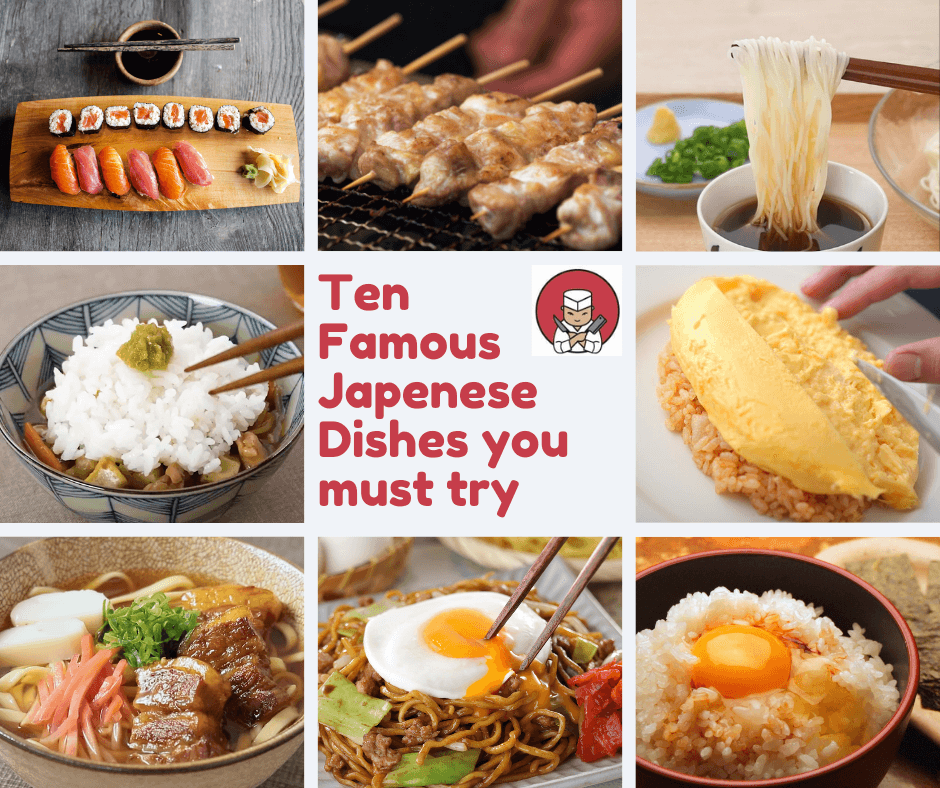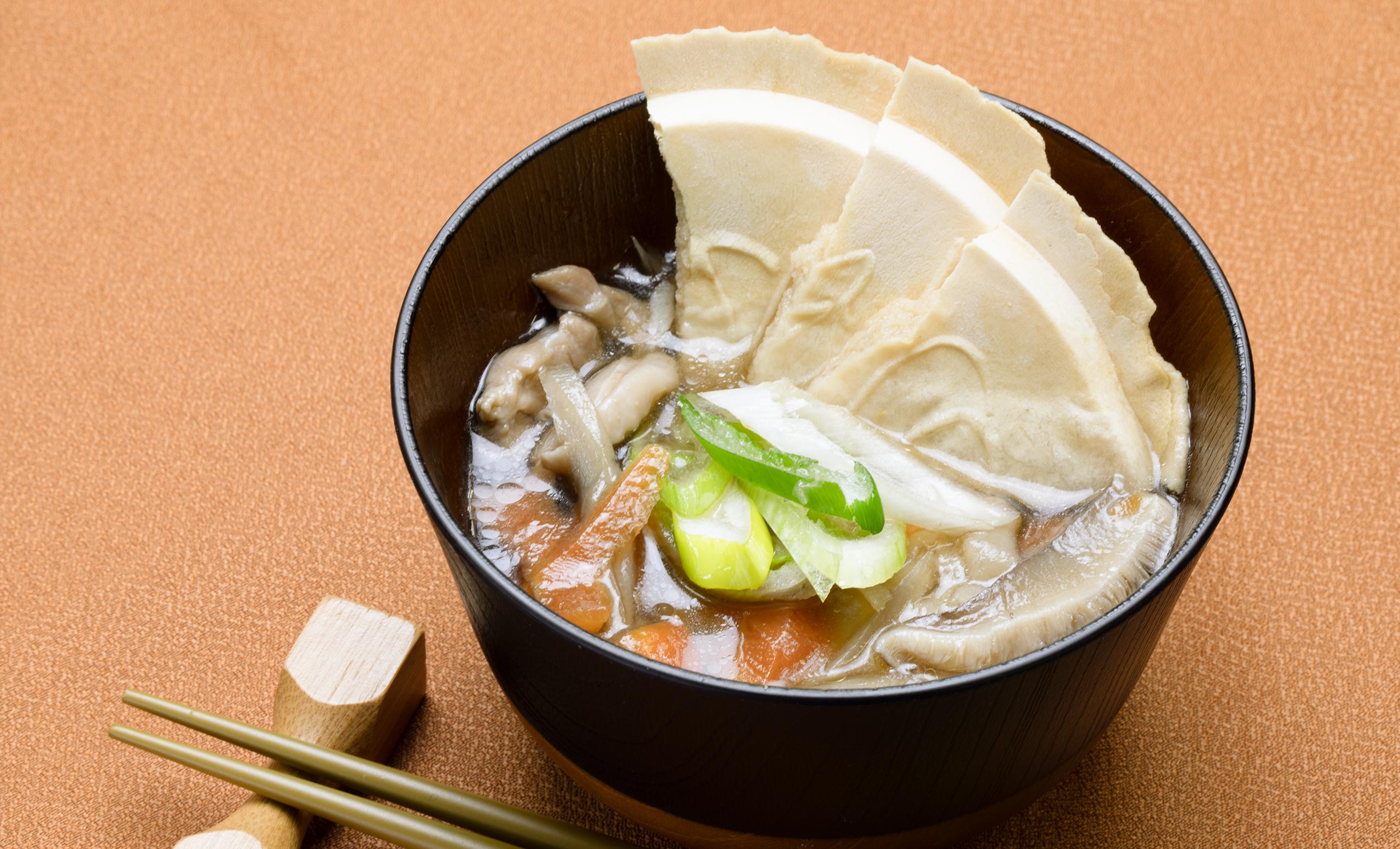
Omu-Rice (オムライス) is a very popular yoshoku (i.e. Japanese Western food) dish originally from Tokyo Prefecture (Kanto Region).
You can think of it as a Japanized version of the classic French/Western style omelette. There are many variations of omurice — the most basic/classic version is ketchup-flavored, chicken fried rice that is wrapped/covered with a thinly fried egg.
The word is simply a combination of the words omelette (オムレツ — pronounced “omuretu” in Japanese), and rice ( ライス ).
Read on for more interesting info about omu-rice:
Ingredients
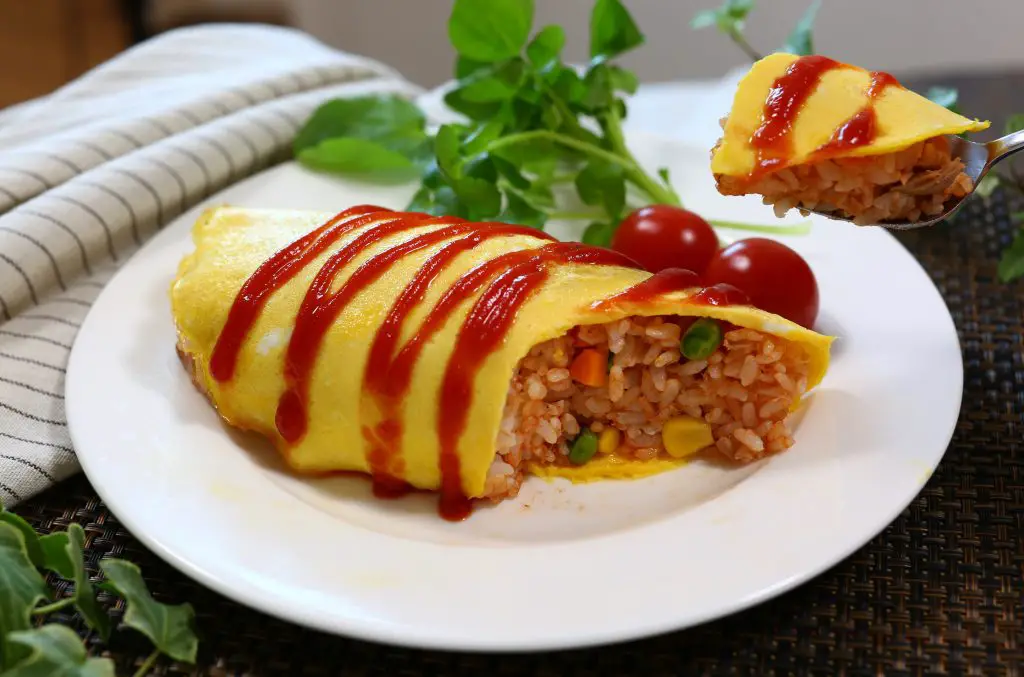
The main ingredients of omu-rice are:
- Rice
- Egg
- Ketchup
- Chicken
- Various vegetables
The most classic version of omurice is made with ketchup-seasoned, chicken fried rice. The fried rice is then wrapped in an egg so that it resembles a giant omelette, and topped with more ketchup.
Similar to a Western style omelette, any filling can be used (not just chicken). The only requirement for it to be called omurice is that egg and rice is used. Some popular chicken alternatives include shrimp, bacon, sausage, or ham.
Sometimes other non-ketchup sauces are also used like demi-glaze, or even cream sauce (bechamel).
There are also variations such as curry omurice.
Location
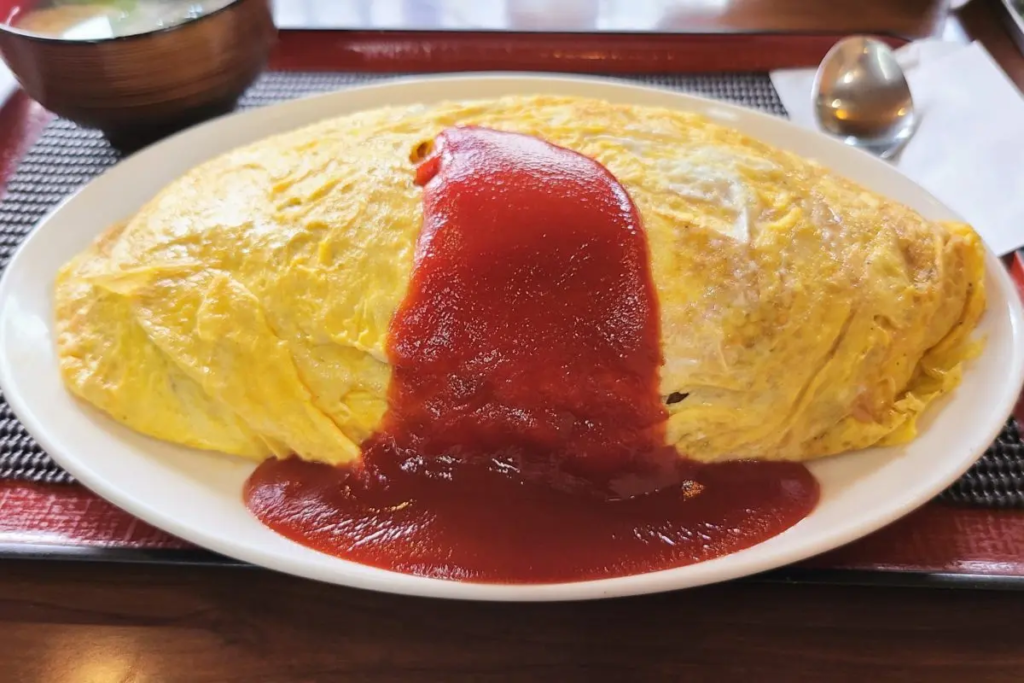
Omurice can be found all across Japan. It is most commonly served in Western restaurants and cafes, as well as cafeteria-style restaurants (食堂).
It is also a popular homecooked meal.
The original omurice is attributed to Japan’s two main cities — Tokyo and Osaka. Read below for more about its interesting history:
History / Origin of Omu Rice
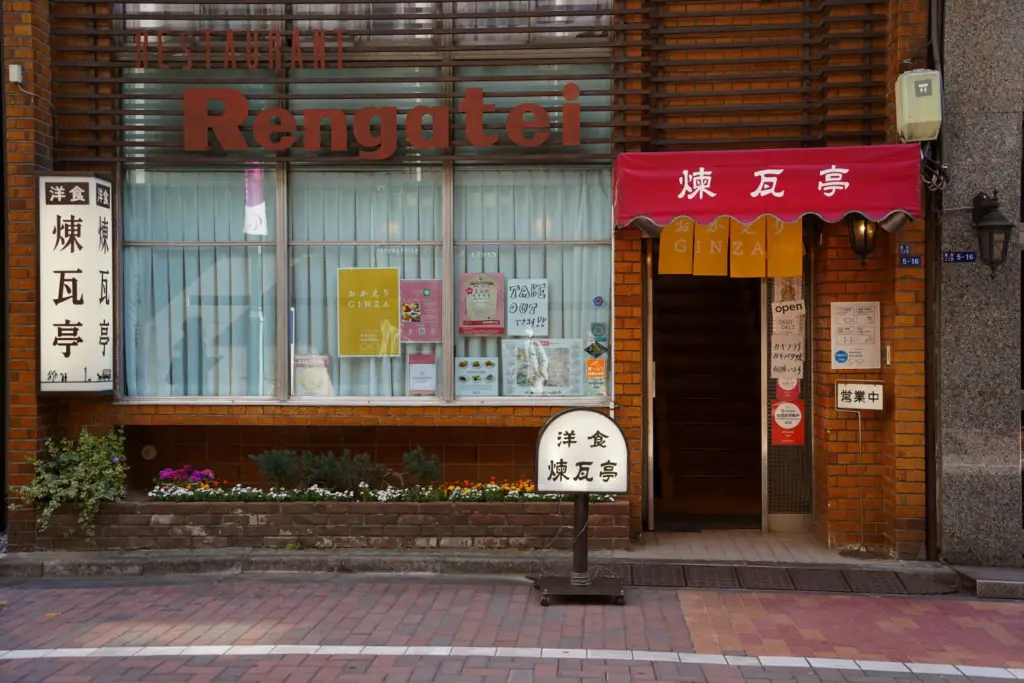
Modern day omurice can be traced back to two restaurants — one in Tokyo, and one in Osaka.
Tokyo: Rengatei (煉瓦亭)
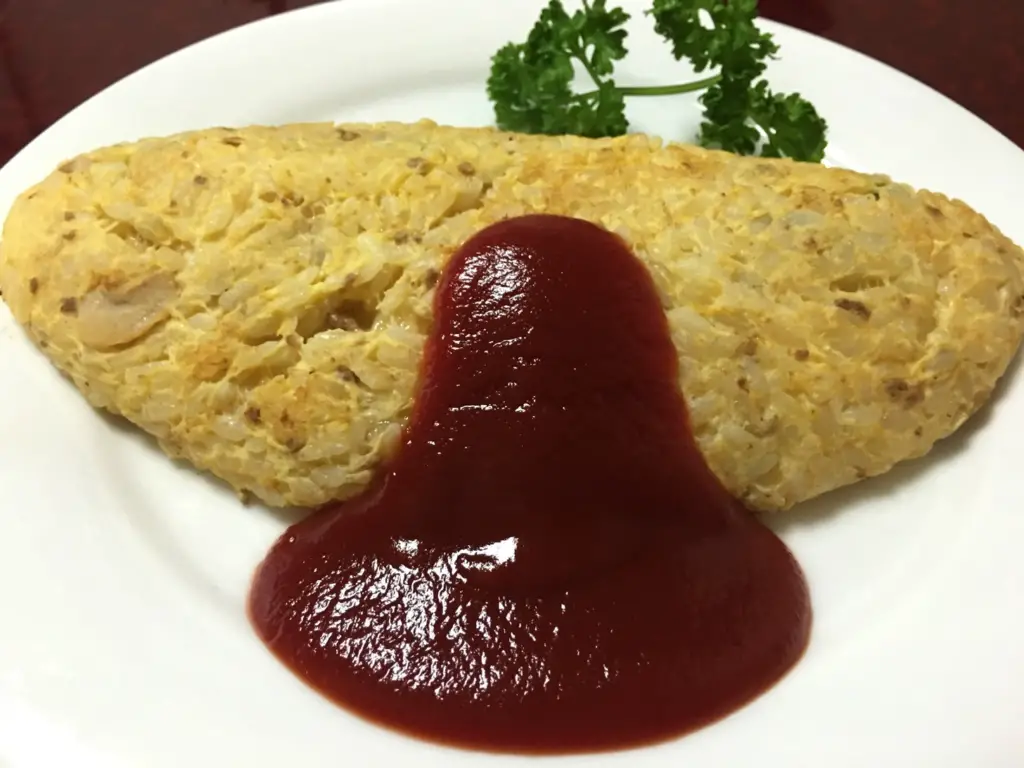
Rengatei (or Renga-tei) is a Western-style (i.e. yoshoku) restaurant located in Ginza, Tokyo that has been around since 1895. They claim to be the originator of omurice, and also the first “Western-style” restaurant in all of Japan.
Rengatei’s original omurice was created in 1900. It is a bit different from today’s version. Instead of covering/wrapping the fried rice with an egg, the egg is simply mixed together with the rice and other ingredients. The mixture is then cooked and made into an omelette shape when plated.
The dish was actually created as a quick meal for Rengatei’s busy employees. One day, a customer asked what it was and wanted to try. The rest is history.
Ketchup was also not originally used, as it was not introduced to Japan until around 1908.
Rengatei is still in business. If you happen to be in Tokyo, make sure to go check it out and try some original omurice!(Google Maps link).
Interesting note: Rengatei is also the originator of other popular Western-style dishes like tonkatsu (i.e. deep fried pork cutlet), and hayashi rice (i.e. hashed beef with rice).
Osaka: Panya no Shokudo (パンヤの食堂) / Hokusei (北極星)
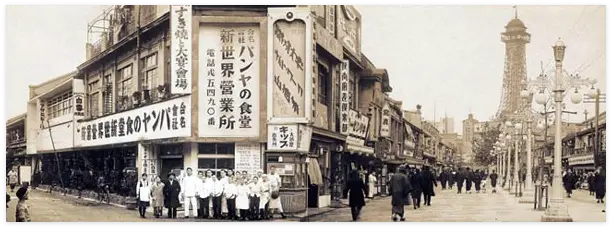
Hokusei, formerly known as Panya no Shokudo, is a restaurant located in Namba, Osaka that started in 1922.
They are credited by many people as the creator of the modern day omurice.
In 1925, a regular customer at the restaurant used to always order an egg omelette and plain white rice. He had a weak stomach, so could not eat much else.
The owner felt bad that the customer had to eat this boring meal all the time, so one day, he cooked some ketchup rice and wrapped it in a thinly fried egg.
The customer loved it and asked what it was called. The owner then came up with the name “omurice” — omelette and rice together as one.
Modern Day Omurice
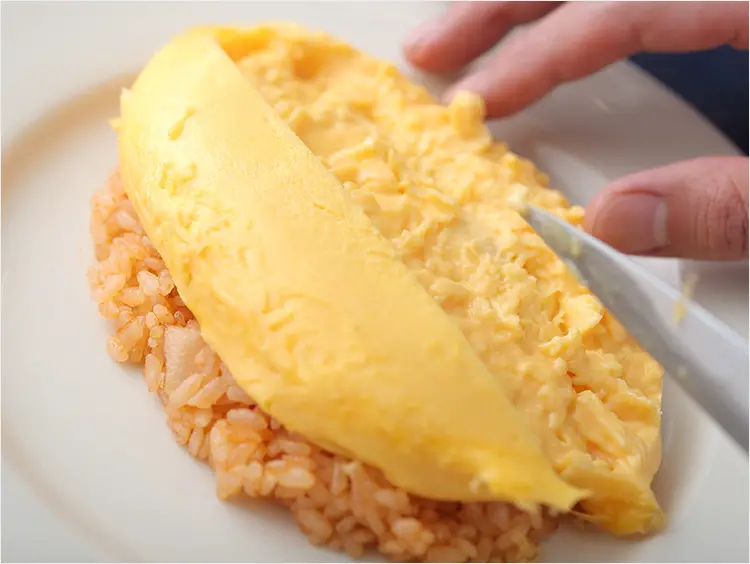
Omurice has evolved a lot since its founding in the early 1900s.
Different ingredients, sauces and cooking methods have been used to make omurice variations.
One of the most popular variations is half-cooked omurice (半熟オムライス). A semi-cooked omelette is place on top of rice. When it is served to eat, the omelette is slit in half, and it unfolds gracefull to cover the top of the rice.
This was originally made popular by the movie “Tanpopo“, which was released in 1985.
It gained popularity overseas in recent times thanks to social media like YouTube and Instagram. There are some restaurants that specialize in this type of omurice. The most famous restaurant for foreigners is probably “Kichi Kichi” located in Kyoto (Google Maps link).
Check out the original Tanpopo omurice scene below:
Omu Rice Recipe
Coming soon!
Fun Facts
- Omurice.com is one man’s blog dedicated omurice. He has eaten at over 1000 omurice restaurants over the last 28 years!
- “Omu-soba” オムそば is yakisoba (i.e stir fried noodles) wrapped in an omelette.
Summary
Have you ever tried omu rice before? What did you think of it?
Leave your thoughts and comments below!
Subscribe for free today! Receive cool recipes, my latest Japanese knife picks and learn about Japanese culture. Delivered every other week to your inbox.
